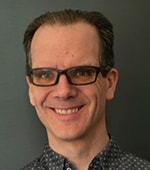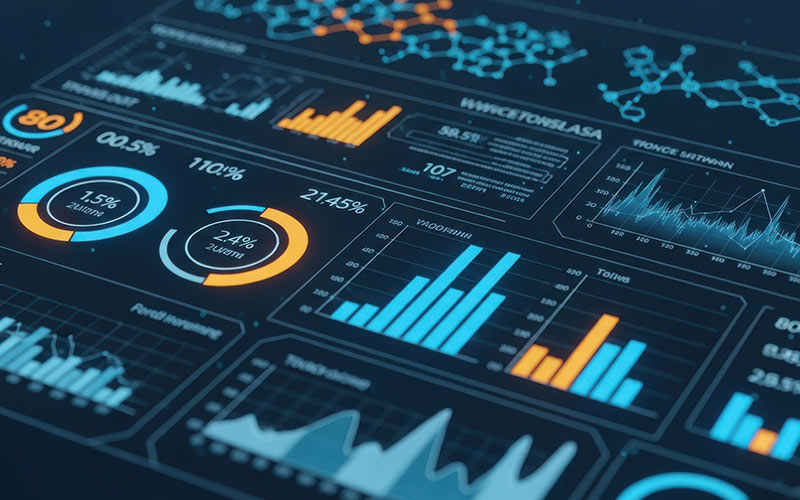
Prof. Colm-Cille Patrick Caulfield, is a Professor of Environmental and Industrial Fluid Dynamics in the Department of Applied Mathematics and Theoretical Physics, University of Cambridge, where he is also Head of Department. During a recent interaction, he spoke about the relationship between mathematics and AI, how to motivate our youth to pursue a career in STEM, and cross-disciplinary collaboration in the AI Center he is a part of.
Mathematics broadly underpins all aspects of AI from the construction of algorithms to concepts about computability, information theory, and how you extract information from data, says Prof. Caulfield. But he feels a real aspect that must be appreciated is that mathematics is a construct of humanity that has at its heart the concept of proof and rigor.
Trustability of AI: Mathematics has traditionally been a mechanism by which we can know if something is true. And so, a real challenge for mathematicians as well as an opportunity is to develop a more rigorous understanding of what is actually happening within AI tools and therefore to be able to describe the limitations. Calculus was developed by Newton and Leibniz to describe the natural world. But it took several centuries to put it on a rigorous footing. Hopefully, it will not take centuries to rigorize the AI tools.
There is a lot of interesting work going on in the academic community to try and understand the underlying premises and truths hidden within the calculations and AI algorithms that we have developed. As we move towards using AI in mission critical environments such as those associated with safety or diagnosis or medical decision making, it's important that we have confidence in the results that come from understanding the underpinning mathematics at the heart of the AI tools.
Mathematics is a construct of humanity that has at its heart the concept of proof and rigor. A real opportunity is to develop a rigorous understanding of what is happening in AI tools.
Mathematics and efficient computing: There is ongoing advanced research in the trustability of AI. But it is important to also focus on efficient computing, to make sure the algorithm is as efficient as possible and to allocate resources appropriately. There is collaboration with Infosys and Cambridge on this topic, with AI-enhanced simulation. We have a given amount of computing, power, and time. What is the best way to allocate resources to solve the problem at hand? That is a fundamental question. Prof. Caulfield is also involved in the Institute of Computing for Climate Science, where the research looks at those very problems in climate science so that we can make use of resources most efficiently and most sustainably to get the answers we want. Sometimes there is a tradeoff with complexity so that a model can be run efficiently at slightly less intensity.
Motivating students in mathematics: To motivate students in mathematics, the key aspect is to spark their imagination and to trigger their curiosity into looking at STEM subjects by showing how exciting and beautiful mathematics and technology can be. Children are so curious about the world and everything's exciting. They think that dinosaurs, comets, and stars in nature are amazing. It is incumbent upon those in the STEM field to then show that understanding nature from a scientific or mathematical background is exciting by itself and beautiful. It is attainable by anybody. Everybody can think like a mathematician, and mathematics is so much more than knowing your times tables. It is about understanding the natural world around us.
Symmetry is at the very heart of mathematics, and it is known to humans to be at the very heart of beauty. Just to give one example to show how mathematics is all around us, the Fibonacci sequence appears in the structure of petals on a flower. Cambridge invests a lot of effort into outreach: for example via the programme called NRICH, which shows children of all ages from six or seven upwards that problem solving skills and thinking like a mathematician is fun and exciting.
Multidisciplinary collaboration for AI: AI by itself is multidisciplinary. Prof. Caulfield himself is particularly interested in improving our descriptions of the rapidly changing climate by using a combination of traditional physics-based models in tandem with data-driven AI tools. That is an example of how important it is to engage with domain experts, data scientists, software engineers, to speak each other's language and engage with each other.
Prof. Mihaela van der Schaar in Cambridge uses AI for many applications in the medical field, not only in drug discovery, but also, for example, to support clinicians for diagnosis, for testing theories and treatment plans. Prof. Carola Schönlieb also is a world leader in using AI tools to analyze images originally for medical imaging and diagnosis. More recently, she started to work with art historians and conservators about using these tools for cultural heritage, to understand the history and the provenance of artworks, to analyze images and identify particular brush strokes or tool markings in medieval paintings. We can then get a much better understanding of when and where the paintings were created, and to reconstruct damaged images in the most plausible way. These are examples of mathematics and AI being multidisciplinary and applicable everywhere.
Addressing bias for ethical AI: Prof. Caulfield says there are two stages in which mathematicians can address ethical challenges. The first is identification, to show how biased data may be, in many situations where unconscious bias could be present. Large language models are typically trained on data that is from the developed world and is more deficient in representing the global south. By quantifying the size of the problem, mathematicians can play a role in the solution. By understanding the extent of bias, they can suggest solutions to address that bias and to give trustability. A significant aspect which is perhaps underappreciated is that mathematics will be an honest broker in this process because it will not have an agenda. Understanding how far you are away from the truth, and suggesting strategies to optimize calculations are just two of the procedures to minimize the extent of bias that mathematicians can use to address issues with responsible AI.
By quantifying the size of bias, mathematicians can play a role in the solution. Mathematics will be an honest broker in this process because it will not have an agenda.
Human in the loop: We are undergoing a rapid period of change where we will see AI become more and more common in our everyday life. Many of us have experienced the ubiquity of having a powerful computer in our pocket. AI has the potential to enhance and support human activity. One analogy from the past is mechanization of farming, which meant a huge increase in productivity by modifying it from a labour-intensive industry. Closer to home, the invention of the vacuum cleaner doesn't mean that we stopped cleaning our house, but it meant that the house was cleaner than it was before. It is clear that for certain roles in the world of work, certain activities will be replaced by AI. But Prof. Caulfield thinks there is a real opportunity for boring, mechanistic, repetitive activities to be supplanted by AI. It will allow humans to do more interesting tasks.
AI readiness for corporate and education sectors: Prof. Caulfield thinks that there is going to be a paradigm shift in the education and corporate sectors. It is already happening and will permeate throughout all aspects of society. Businesses are training their employees. We need to perform the role of training and skilling people in an AI native situation. Much of traditional assessment and examinations are challenges to be addressed. The invention of the calculator did not mean that it reduced the value in children learning their times tables. We need to embrace the change. We should transition from teaching knowledge to imparting skills. Adaptability, problem solving skills, thinking like a mathematician, having logical, critical thinking skills and being creative, are all going to be important. This is a very challenging time but it’s very exciting too.





